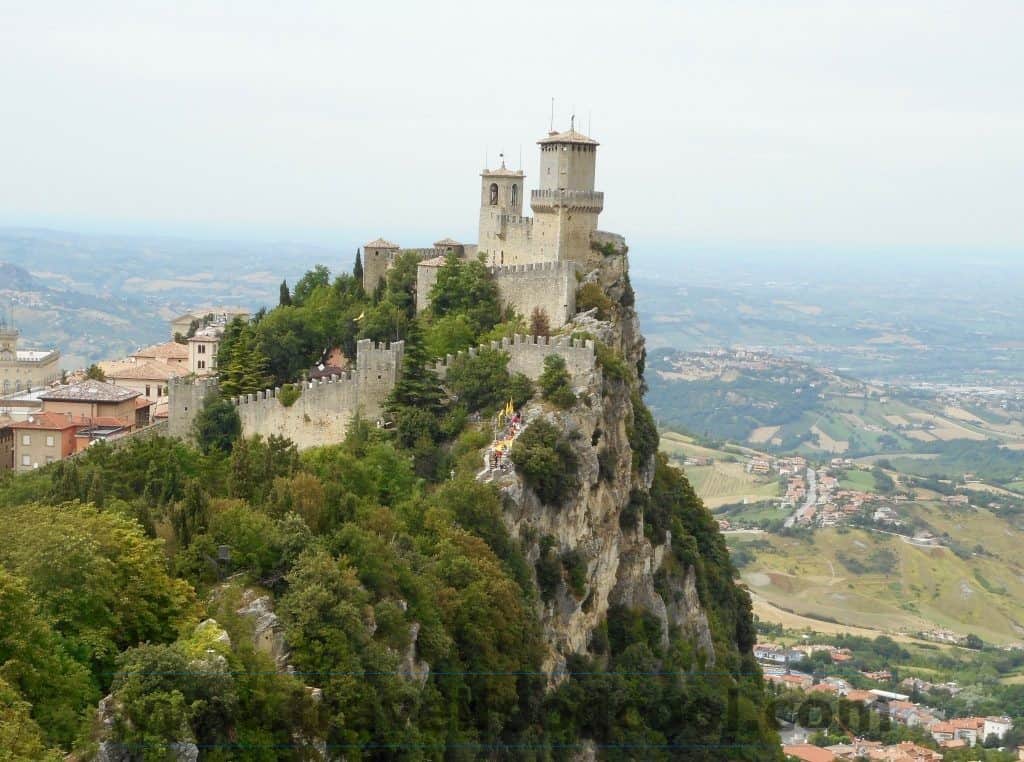
Unfortunately, there was not a lot of sun on our Sunday in San Marino. The day started off raining, raining to the point that Pete looked at me and said, “let’s leave and go home to Umbria”. I somehow managed to get him to agree to stay and we are both happy that we stayed!
The Most Serene Republic of San Marino is an independent federation which, while surrounded by Italy, is not part of Italy. It has been this way since 308 AD when Marino (now Saint Marino), a master stone-cutter, fled from Arbe in Dalamatia to escape religious persecution. The old town of this most serene country is perched precariously on top of Monte Titano. I can’t imagine anyone being stupid enough to invade this country as you have to go straight up a rock face to reach it.
Just in case someone was stupid enough to try to invade, there are not one, not two, but three towers high on the hill to offer their protection. The three towers are so famous in San Marino that they are prominently displayed on the country’s flag and coat of arms.
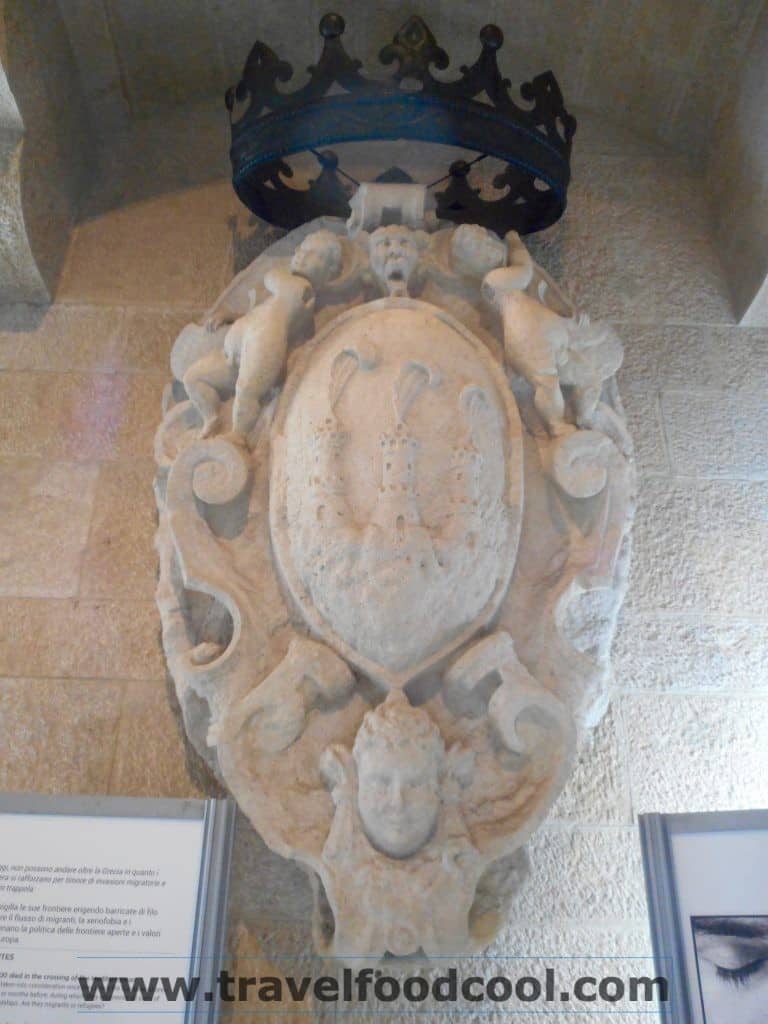
ELIN’s TIP: buy the multi-museum pass, it is good for 10 days and will get you into every tower and museum in town.
The first tower, Guaita, is the largest of the three. It was a military fortress also called “Rocca Maggiore” (Major Fortress) or “Prima Arx” (First Fortress), and has been around since 1253.
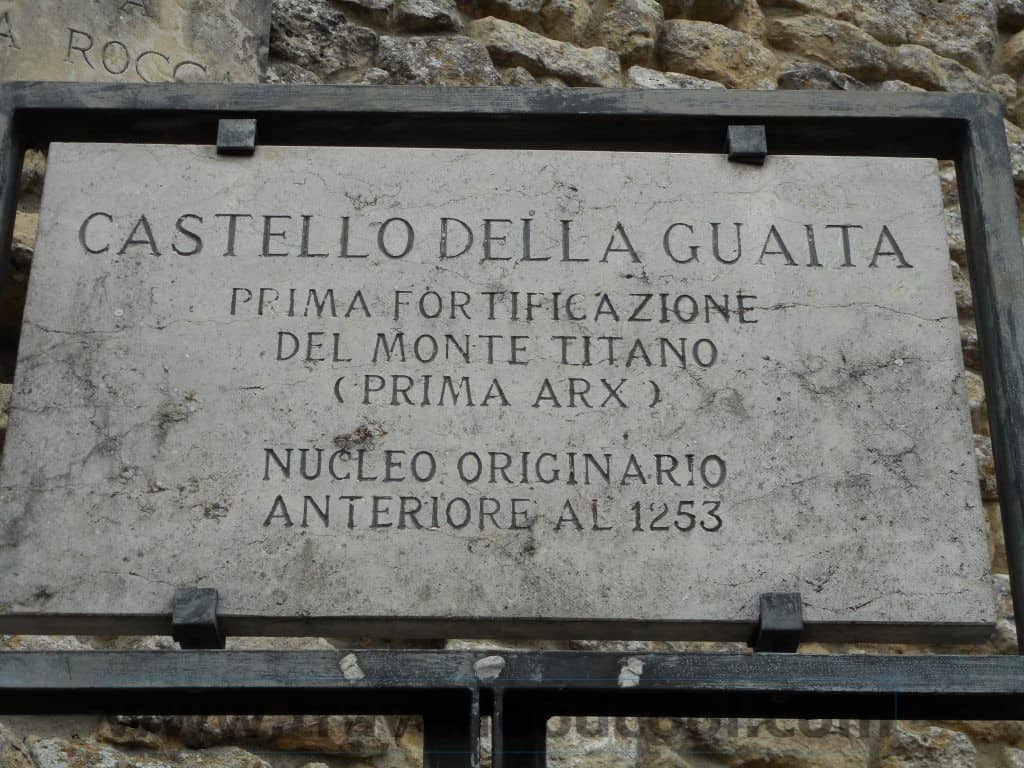
This was home to the first group of inhabitants of San Marino. A guardian (as set out in the statutes of the 17th century) had to watch over the whole surrounding territory and in the case of danger, ring the tower bell. The same bell is rung to announce the sessions of the Great and General Council (the San Marino Parliament).
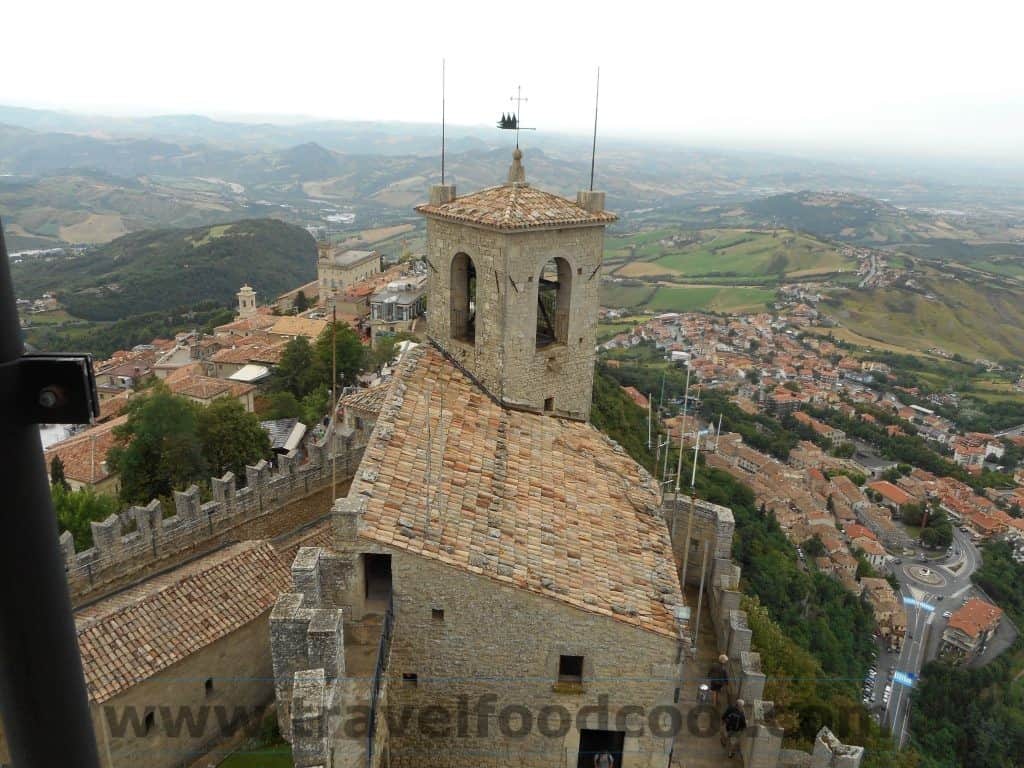
Visitors have a chance to climb up to the tower tops and admire the views. One can also see re-enactments of workers in historic dress talking about life and times in years past. An interesting display of the outfits will be the topic of another post.

The second tower, Cesta, stands on the highest peak of Mount Titano (756 m above sea level) and is the second guarding military fortress. In ancient times, it hosted a guardian and a garrison of crossbowmen. Now Cesta contains the armoury collection. Exhibits of guns, swords, crossbows, armour, shields and other weapons are prominently displayed, including some fakes that have made their way into the collection over the years. The Museum of Ancient Weapons is home to over 2,000 pieces, with 700 of them on display. (This room is a popular favourite with small children.)
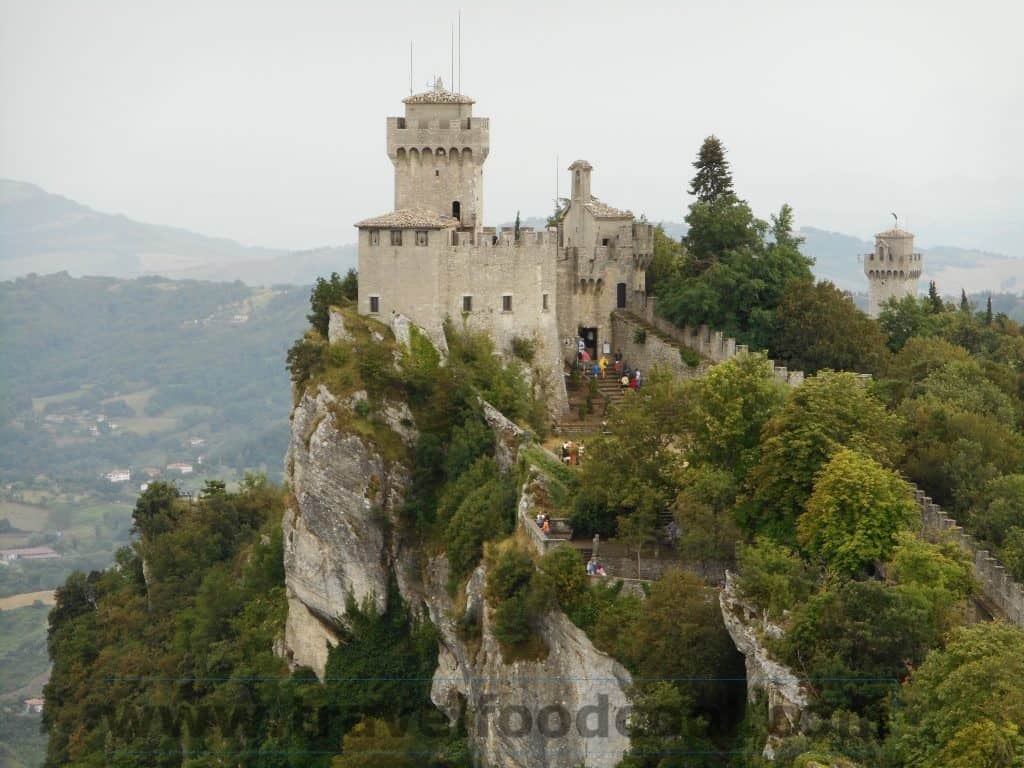
The approach to Cesta Castle has a walkway on the walls which gives you that “we are definitely not in North America” feeling, as there is no handrail, there is moss growing on the edge and it is wide open. There is a small note that says, “caution, you may fall”, but that’s about it for liability. The wall walk is quite fun.
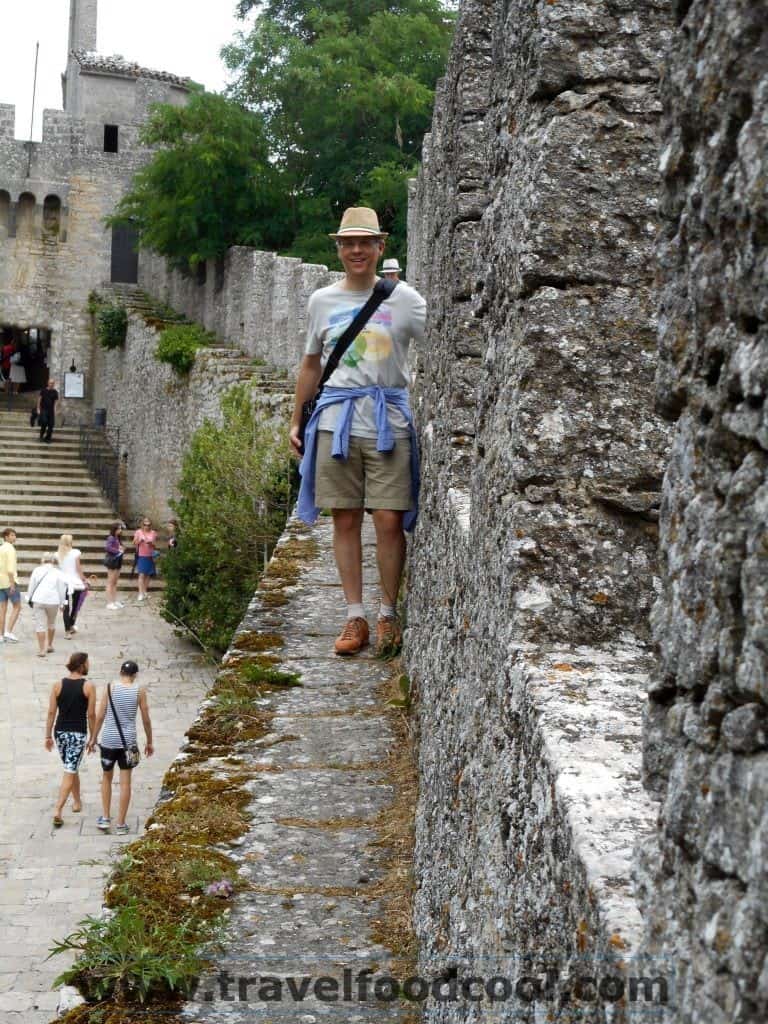
The third tower, Montale, is connected to Cesta Castle (the second tower) by a path through the woods. Montale was first mentioned in 1371 and remained in use until the 16th century. Originally, Montale was an isolated guarding post until in 1320 the walls connecting it to Cesta were built. After it fell into disuse, its walls were used for years as an opencast quarry and people “extracted” stones from it to build the houses in the Old Town. Traces of the walls remain today. Montale, while intact and accessible, is not open to visitors.
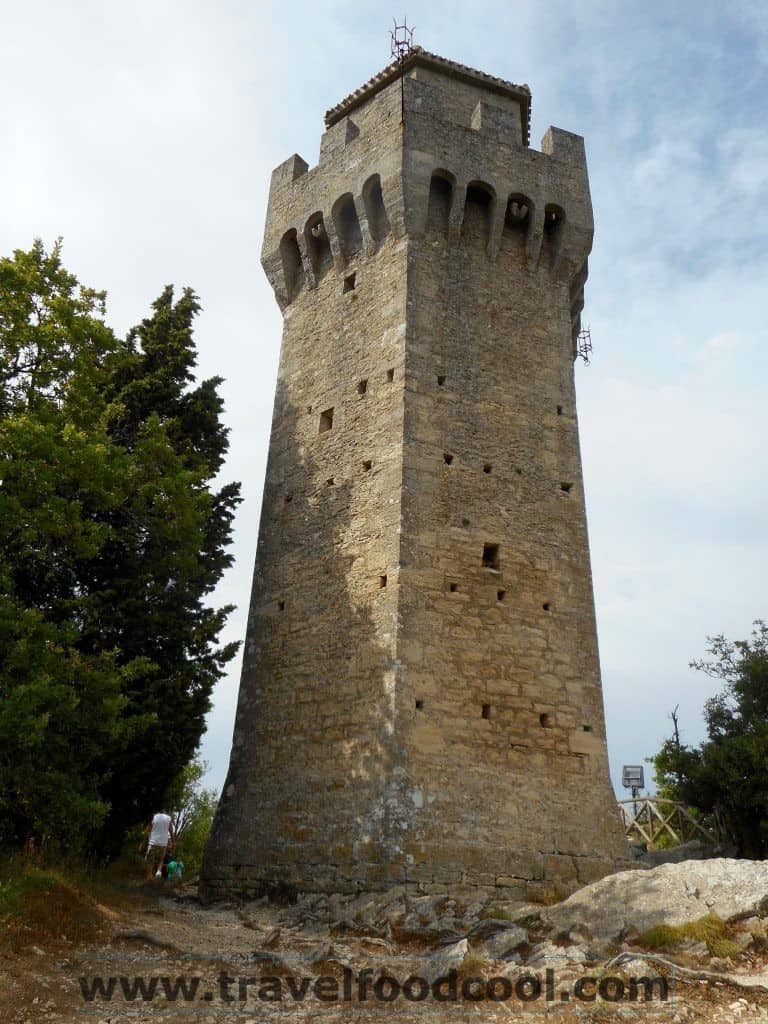
The walk from the second to the third tower is quite shaded and a nice walk in the woods.
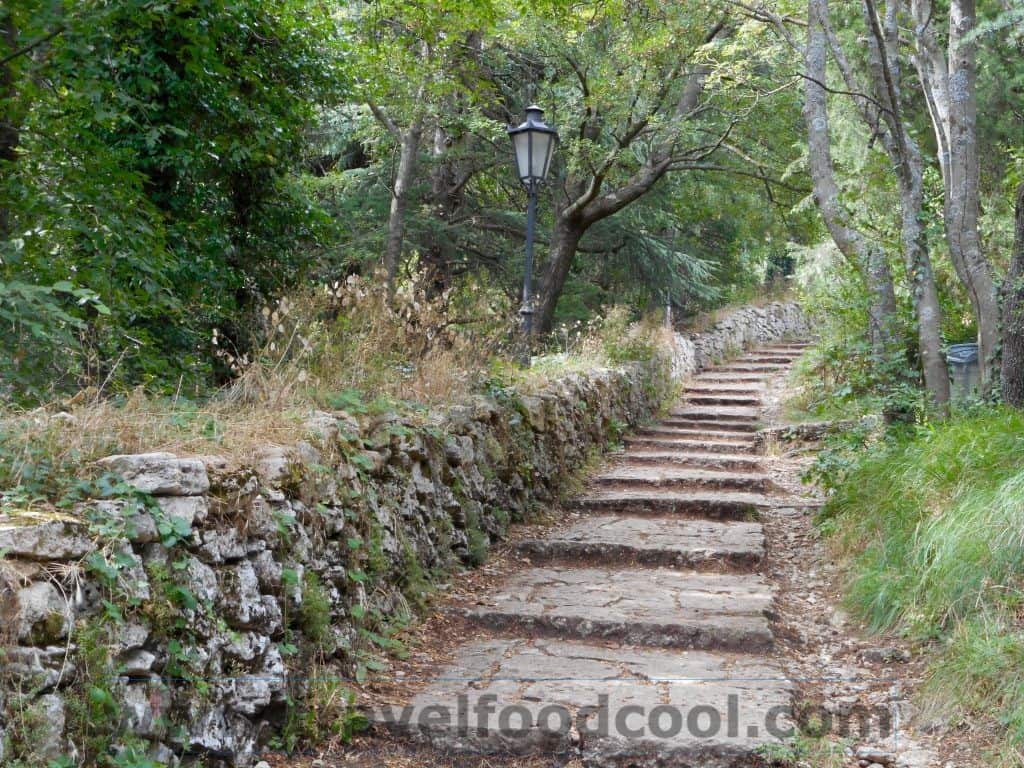
Included with your museum pass is the town hall, or Public Palace. Guards in their “Christmas” uniforms (green jackets and red pants) stand at the door. Inside the building and up the stone staircase is where the town council meets. A separate room for the Council of Twelve is under the watchful eye of Saint Marino holding Monte Titano in his hand.
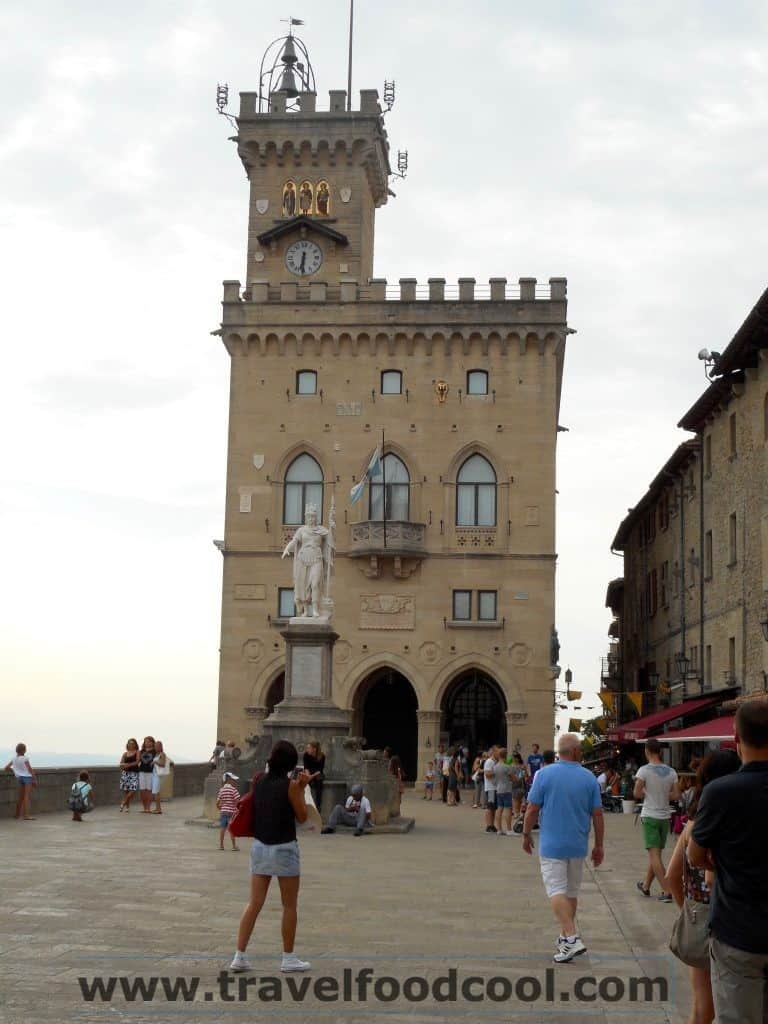
San Marino also has its own wine and spirits industry. The red wine, like that of its Italian neighbours, is a Sangiovese blend. More interesting is the Amaro al Limone (I love this one and brought a bottle back to Toronto). We went to “L’Angolo del Liquore” (on the route to the first tower) where we met Irina. Irina let us sample the local wine and many cream liqueurs produced in the area.
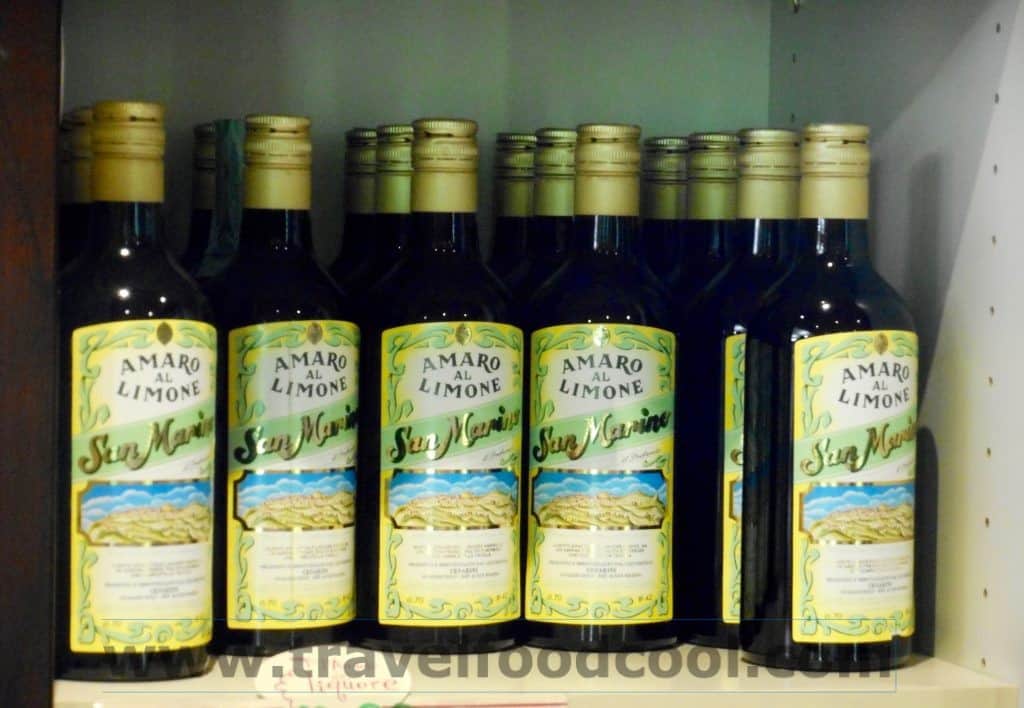
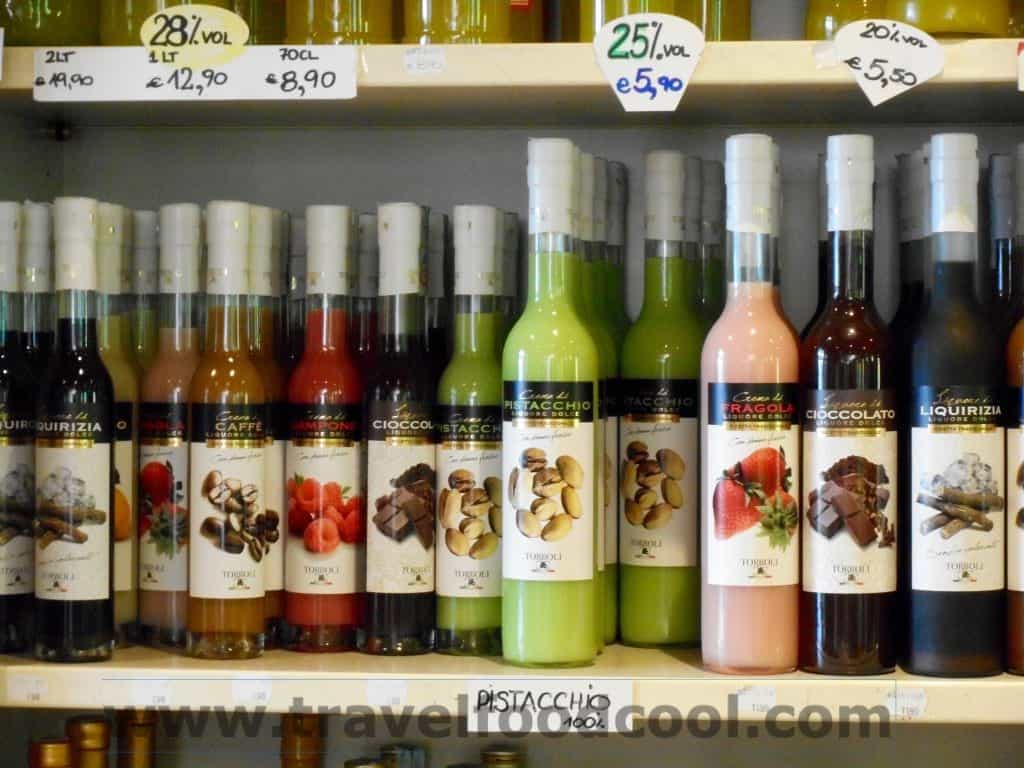
While we were in San Marino, there was a medieval archery tournament underway. Archers from the area, as well as the rest of Europe, competed in multiple events throughout the town. Their weapons were traditional bow and arrows. There were various challenges, including hitting moving targets (but not tourists).
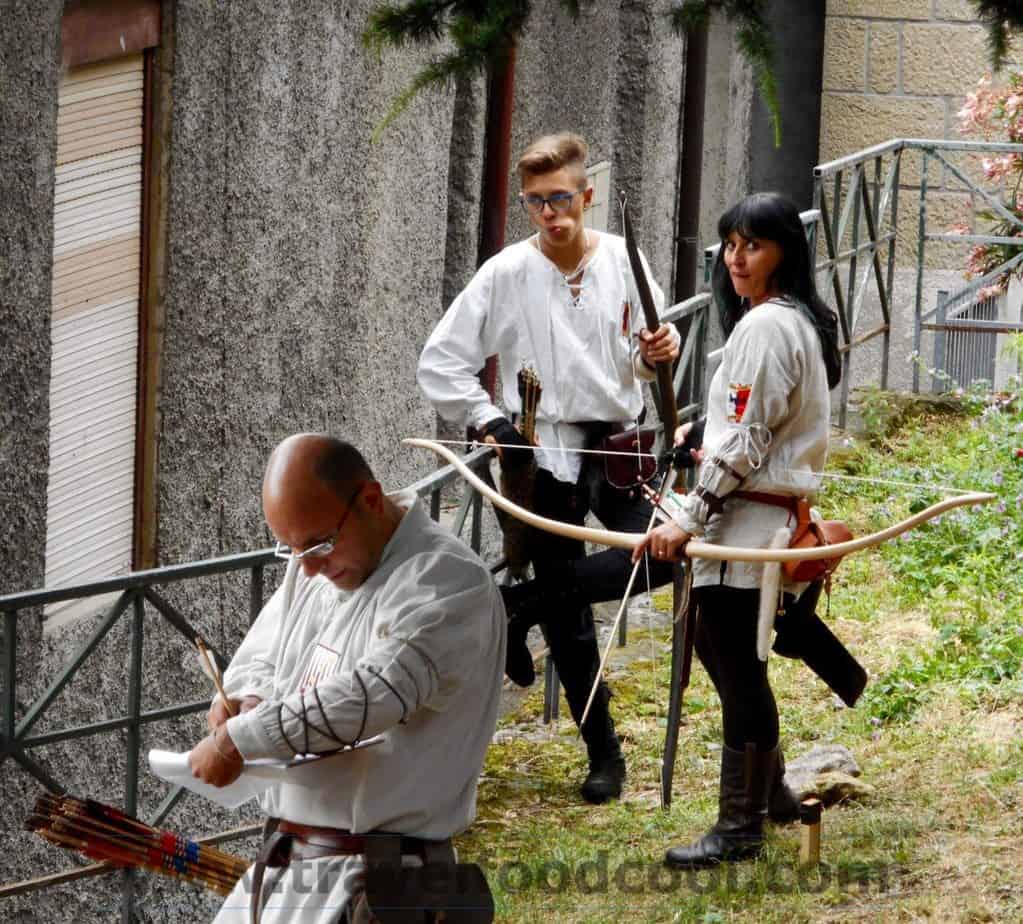
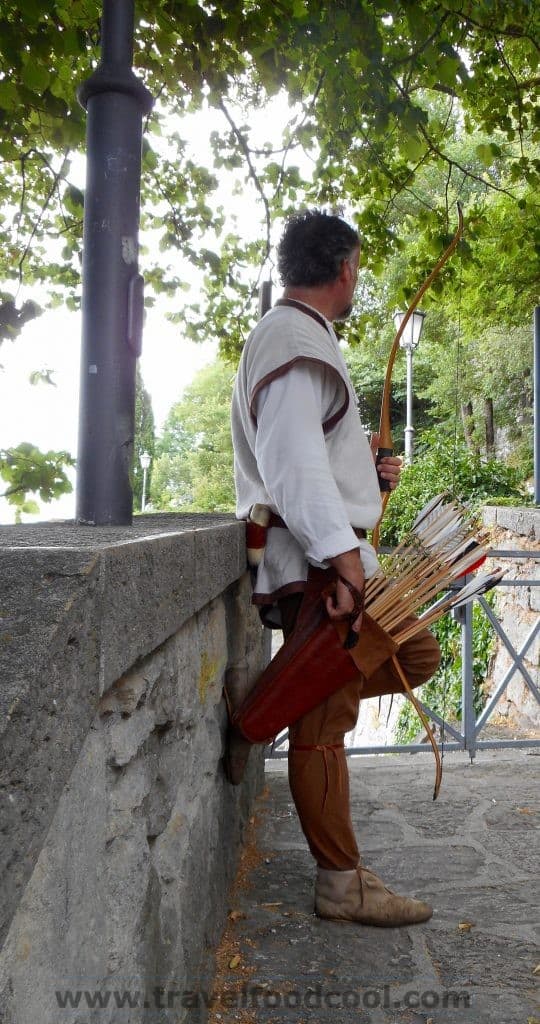
San Marino, due to its favourable low taxes, is a shopping destination for many neighbouring countries. The streets are filled with stores selling watches (including high-end Rolex, Jaeger Le-Coultre, IWC, Patek Phillippe), jewellery, leather goods and clothing. There are also numerous “light armoury” stores (“leggera armoria”) that sell knives and guns (we think that the guns are air or pellet guns, although they certainly look serious). These particular stores are a big hit with children, teenagers and (mostly) men.

San Marino and Mount Titano are UNESCO World Heritage Sites (July 2008). They are listed both for their democracy, civil autonomy and self-governance as well as their living cultural tradition that has persisted over the last 700 years.
One other fun travel-related thing you can do is go to the tourist office and, for €5, they will stamp your passport for you. The sun finally shone on us and we ended our afternoon enjoying spritzes on a terrace and having a sunny Sunday in San Marino.





















